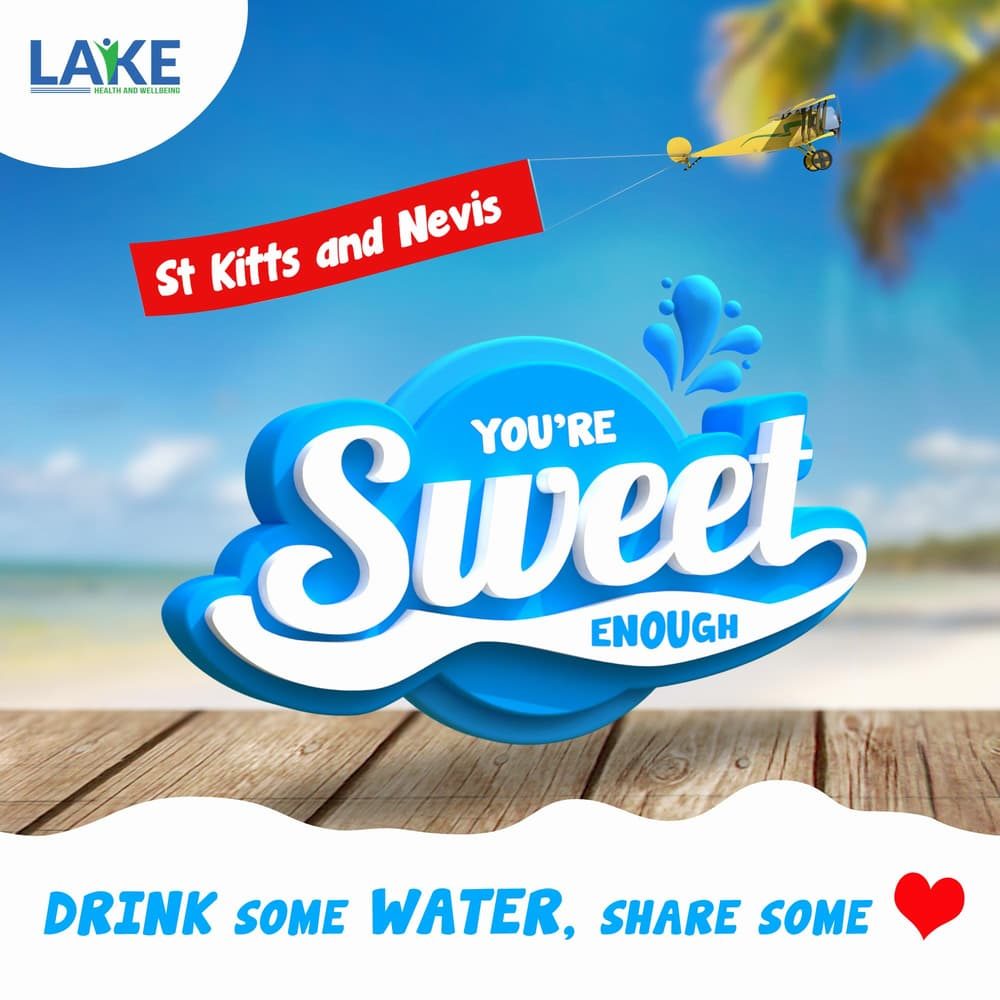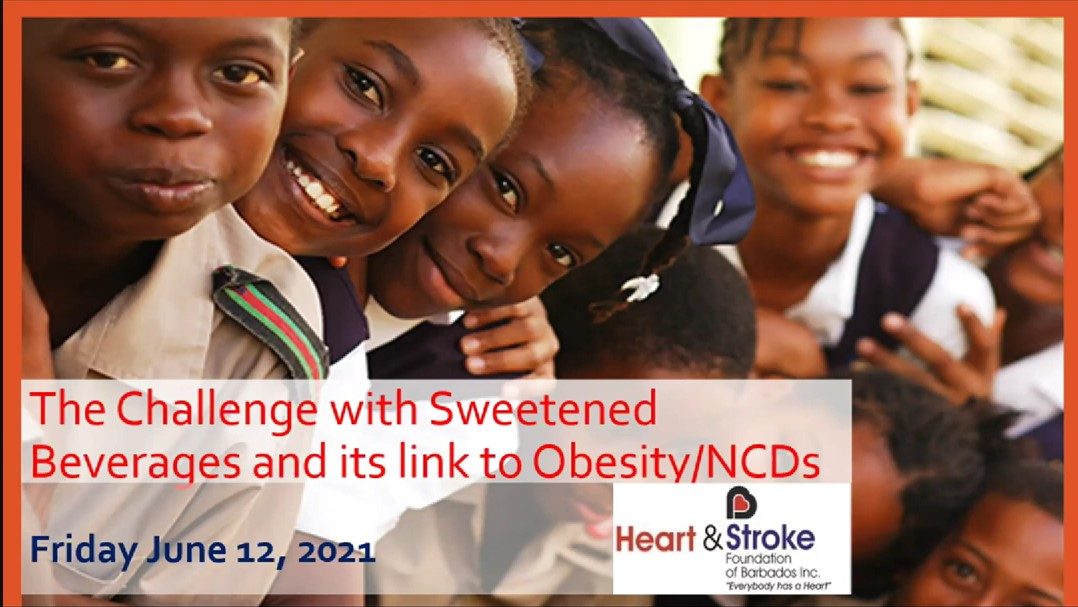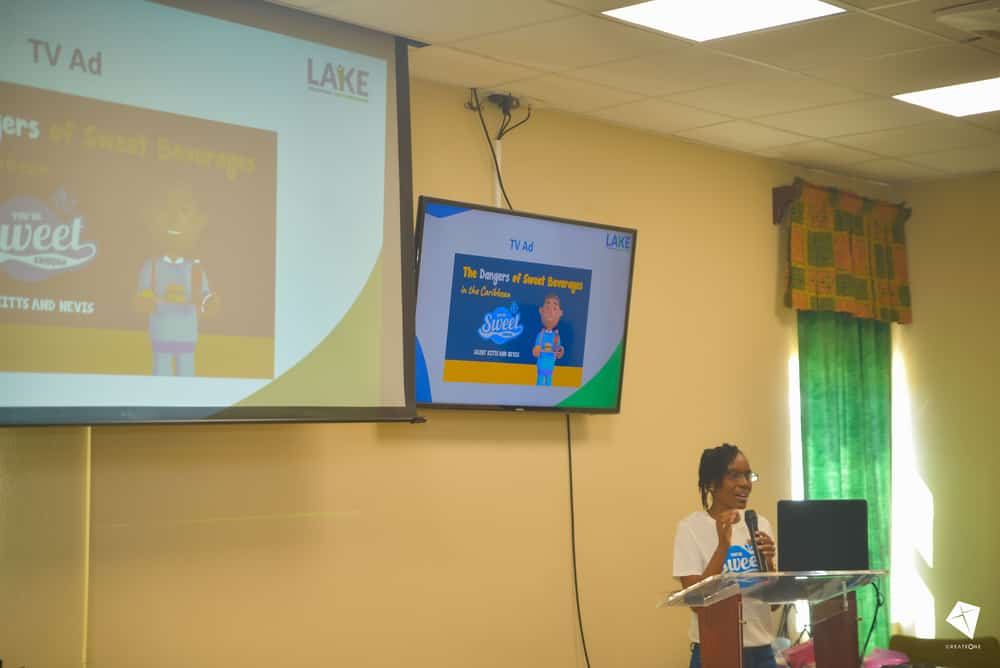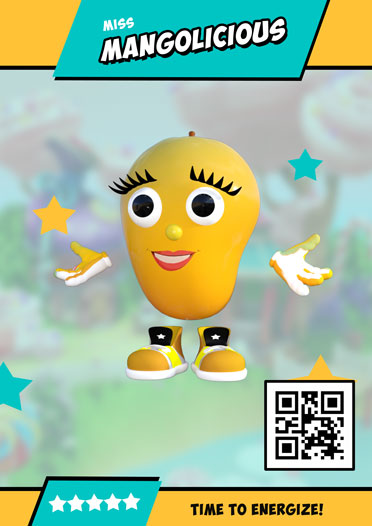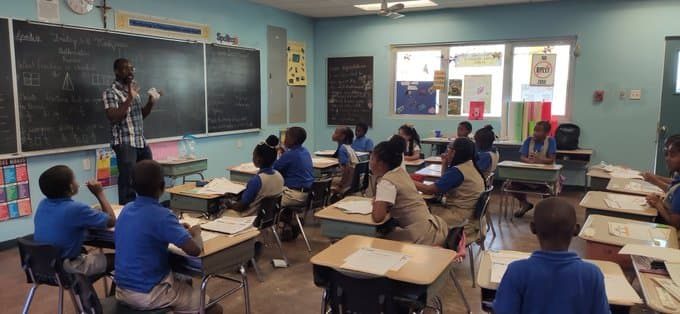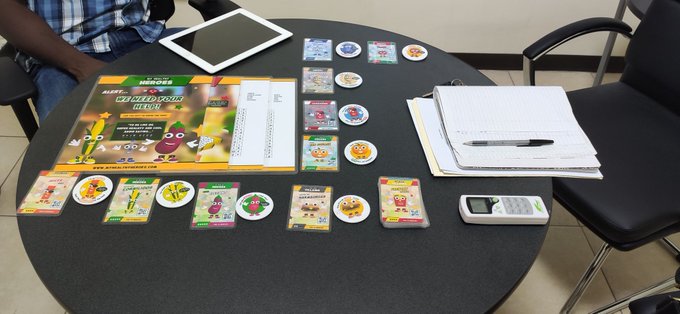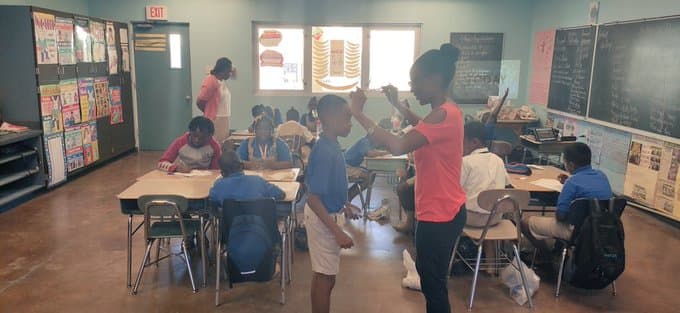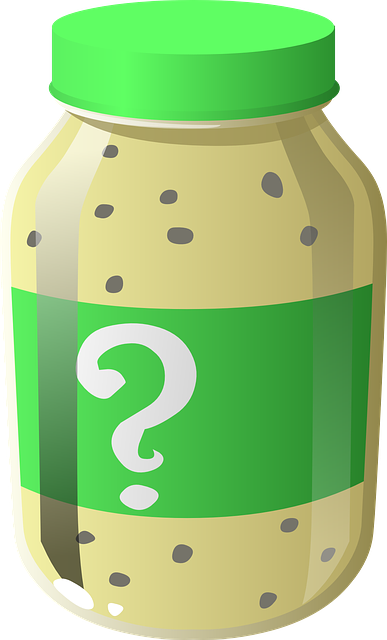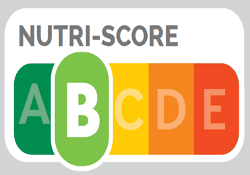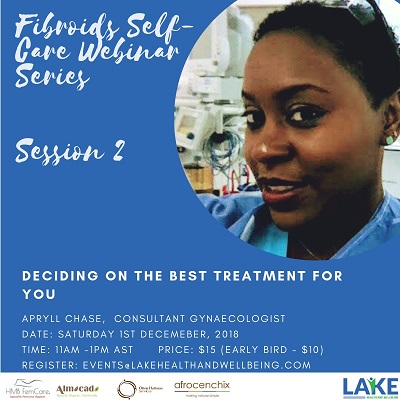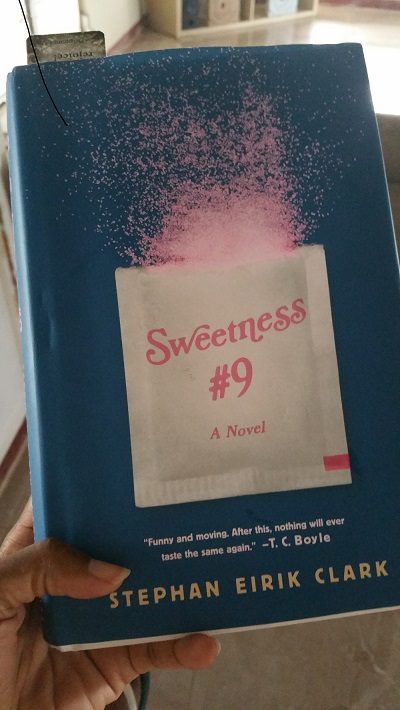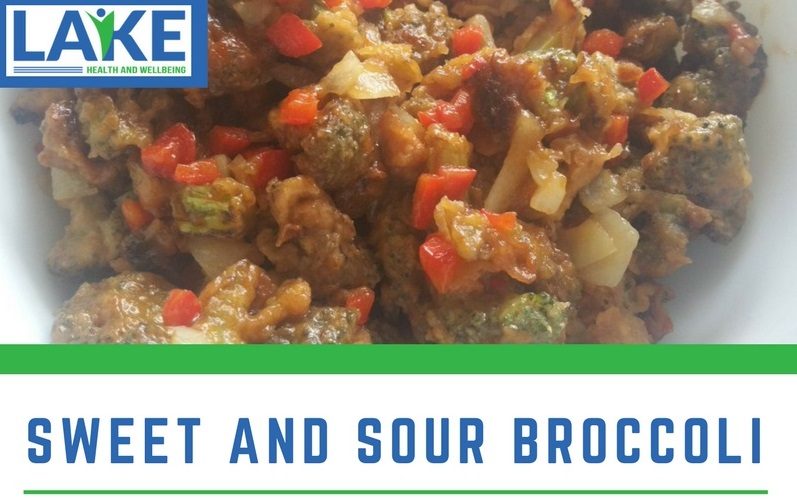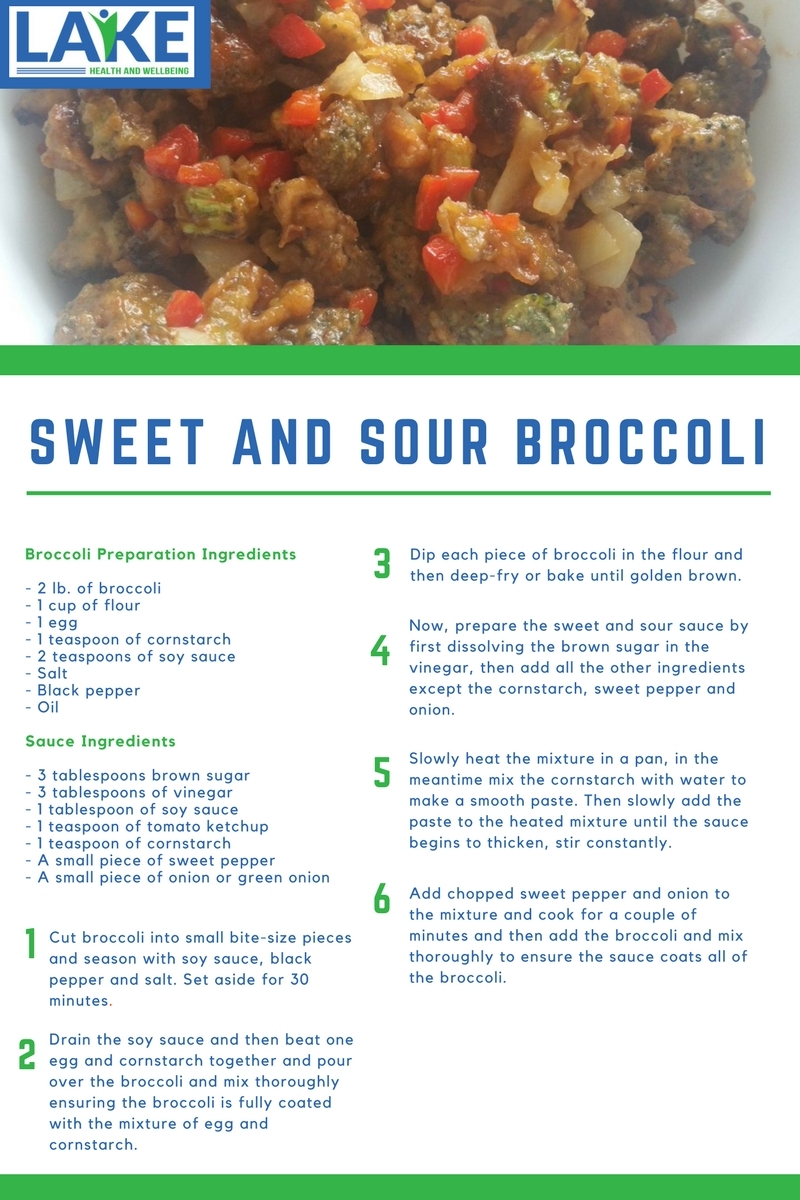Category: Diet
Healthy Eating Short Stories by Fourth Graders in St Kitts
As part of our My Healthy Heroes pilot project, we worked with two fourth grade classes in St Kitts to highlight the importance of healthy eating.
As part of this project, we sought to use creative ways to consolidate what students learnt in our sessions. Therefore, one of the tasks we gave students was to write either a short story, rap or poem featuring one of our My Healthy Heroes characters.
Today, we’re delighted to share a few of the short stories with you. We hope you enjoy them.
A Mangolicious Dream
By: Rainier Martin
In the night, Amelia ate her dinner. Afterwards, she went to sleep, to wake up the next morning.
When Amelia was finally asleep, she had a great dream. There were characters, Miss Mangolicious and her healthy fruit and vegetable friends.
Miss Mangolicious and her friends, Tommy Tomato and Potato Head Jed were on a great mission.
“We have to save Amelia!” exclaimed Miss Mangolicious.
“Amelia is suffering from a severe case of Lack-of-Healthy-Eating-itis” said Tommy Tomato.
“We need to meet Ameilia at her usual eating spot right now. Quick, to my Mangolicious Carriage!” exclaimed Miss Mangolicious.
“There she is, sitting under the shady trees,” said Potato Head Jed.
“Amelia!” shouted Miss Mangolicious.
“You need to eat healthy foods,” said Tommy Tomato.
“Let us teach you the importance of healthy eating,” they all said.
“It is good to eat fruits and vegetables because you get a lot of vitamins and your bones become stronger,” said Potato Head Jed.
After all that Amelia learned in her dream, she started eating healthy from then on. Every day, Amelia eats fruits, vegetables and of course, mangoes!
The Adventures of Professor Cornilious Cob
By: Kailynn Browne
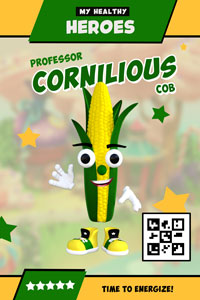 One day, the Sugary Drink Assassins and the Junk Food Villains were trying to take over Healthy Land.
One day, the Sugary Drink Assassins and the Junk Food Villains were trying to take over Healthy Land.
Professor Cornilius Cob said, “Stop right there!”
The Sugary Drink Assassins and Junk Food Villains exclaimed, “We’re not going to listen to you!”
Professor Cornilius Cob needed some help from his friends. He called Miss Mangolicious, Captain Splash, Potato Head Jed and Mama Elegant.
Professor Cornilius Cob said, “We are going to fight them with facts.”
They all thought this was a great idea.
Professor Cornilious Cob said, “I am rich in vitamin B12, folic acid and iron.”
With that said, Frenchy the Frier disappeared into thin air.
“I have vitamins A, C, B6 and potassium,” said Miss Mangolicious. Donutter Dennis turned into dust.
Captain Splash exclaimed, “I am very important.” Juicer Jones turned into a puddle.
Mama Elegant exclaimed, “I have a beautiful colour which makes people want to eat me,” Greasy Greg Chicken Led turned raw.
After that day, the Junk Food Villains and Sugary Drinks Assassins went back to Unhealthy Land and never came back.
We hope you enjoyed these two stories. Please do give our young writers a bit of encouragement by leaving a comment below and we’ll share more in our next blog post.
My Healthy Heroes Pilot Project With Fourth-Graders
On 21st February 2020, we were delighted to start the pilot for our My Healthy Heroes program with over thirty wonderful, enthusiastic fourth-graders from the Immaculate Conception Catholic School (ICCS) in St Kitts.
Our My Healthy Heroes program aims to educate and empower children to make healthy choices by tapping into their creativity to highlight the importance of a healthy lifestyle in a fun and engaging way.
This pilot project with the ICCS aimed to test our resources and characters (Healthy Heroes, Sugary Drinks Assassins and Junk Food Villains) and determine whether our approach would be effective at educating children about healthy eating and more importantly facilitate a change in their behaviour.
Getting Ready for the Pilot
For six months, we worked closely with the Taiwan International Cooperation and Development Fund and teachers at the ICCS to develop a collection of resources that would align with the school curriculum, particularly with the healthy eating classes currently being delivered to fourth graders as part of Health and Family Life Education (HFLE).
The resources we developed were based on three types of characters.
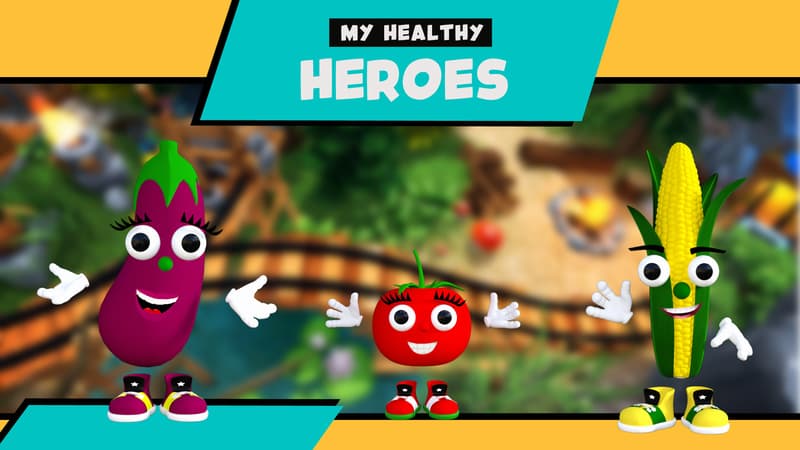
My Healthy Heroes. A group of characters that represent fruits and vegetables, for example, Miss Mangolicious and Professor Cornelius Cob.
Sugary Drinks Assassins. A collection of characters that raise awareness of the dangers of sweet drinks such as the Soda Pop Sniper and Juicer Jones.
Junk Food Villains. A set of characters that educate children about the impact that junk food has on their health (Greasy Grey Chicken Leg, Zerger the Harmburger etc.)
Using these characters, we then went on to develop a lesson plan for teachers, a set of information cards, badges, fridge magnets, activity sheets (food trackers, drinks trackers, food groups, word searches, mazes etc.) and a series of data collection sheets (questionnaires for teachers, students and parents).
We also explored ideas for how we could make classes engaging, encourage children to critically analyse the importance of a healthy lifestyle and introduce creative ways for children to demonstrate what they have learnt.
Through a series of brainstorming meetings, we decided on introducing two creative assignments. The first would be to ask students to write a rap, poem or adventure story based on our characters and what they have learnt about healthy eating. Their creative writing would then be used to create a healthy eating anthology which students can have as a keepsake but most importantly can be used to educate other children about healthy eating.
The second assignment would be to bring their creative writing to life using stop motion animation. In this activity, students will develop a short animation that will communicate a healthy eating message.
Delivering the Pilot
After months of planning, we were really happy to implement our ideas and began on a sunny Friday in February with two fourth grade classes. Our first session with fourth-graders was what we called week 0, a pre-assessment session. During this session, we introduced students to our project and were thrilled at their response. They were excited, enthusiastic and very keen to learn more about My Healthy Heroes – a great start. We also took some basic measurements – height, weight, body fat and waist circumference – of each child and asked each student to complete a questionnaire to find out more about their eating preferences and what they knew about healthy eating. We also gave students a food tracker and asked them to make a note of everything they ate over the following seven days.
Prior to this session we sent students home with a questionnaire for their parents to further explore their eating habits and identify any challenges that parents may have in introducing healthy eating practices at home.
Right now, we’re still analyzing this information, but so far this data has been very insightful. We’ll report back on this in a future blog when all the data has been analysed.
After our pre-assessment session, we visited the school for a further four sessions where we used our resources to discuss the following with students
- Food groups and healthy eating
- Healthy vs. unhealthy eating
- Fruits and vegetables
- Colour categories of fruits and vegetables
- Healthy drinking
- The dangers of sweet drinks
We also gave students their assignment of writing a story, rap or poem based on their selected character (either a Healthy Hero, Sugary Drinks Assassin or Junk Food Villain) and were very impressed at the quality of the work they submitted. The raps were excellent, the stories were creative and the poems were engaging whilst maintaining a healthy eating message as the foundation of their work.
They also had to present their piece to the class and all we can say is ‘wow!’ Our fourth graders came prepared. Some students had memorized their raps and had carefully planned how they would recite their piece so that it was engaging and fun. They really did a great job.
Due to the coronavirus, the school the term ended early, so we’ll be continuing our work with fourth graders in the next month or so.
Next, they’ll be working on bringing their assignments to life with stop motion animation and we’ll be doing a post-project assessment to get their feedback on the project.
What We Have Learnt So Far
So far, we have been extremely impressed with fourth graders retention of the information that we have taught them over the past few weeks. They remember a lot and every week they have been able to recall the information they learnt the previous week.
Our characters have been extremely important in getting children excited about learning about healthy eating and improving their retention of the information. They love the characters and were excited to receive the information cards, badges and fridge magnets, and many of them wore the badges to class every week and wanted to be associated with a Healthy Hero and not a Junk Food Villain or Sugary Drinks Assassin. This suggests that if healthy foods are made cool, we can entice children to gravitate towards healthy options.
An issue that we identified was the need to properly explain the harms of unhealthy eating and in a way that resonates with them. There didn’t seem to be an appreciation of the long-term effect of unhealthy eating and through our discussions with them, we felt that because of this they didn’t see unhealthy eating as something that would impact them significantly. So, we tried to strike a balance of being honest and informative without causing any unnecessary fear, the aim was to be empowering.
Children are honest and overall they did say that they would try to make healthy choices but if they had to choose between certain foods, they would still choose the unhealthy option only because they felt it tastes better – so trying to explore tastier ways of preparing healthy food is a must if we are to change children’s eating habits.
Children were also very perceptive, they realized that they tend to make unhealthy choices because it’s easy in terms of it being accessible and they see it on TV all the time. One student said to us, if he had a food tracker all the time, it would remind him to eat healthily. He genuinely just forgets and doesn’t think about the choices he makes during the day when he buys snacks.
A project like ours needs to be long-term, children need constant reminders and nudges to make healthy choices or else the high volume of marketing of unhealthy foods will capture their attention and influence their behaviour.
We have a lot of work to do in the field of Public Health to compete with the food industry and by expanding this work, we hope that we can make a small contribution to getting children excited about healthy food and therefore encourage them to make healthier choices.
Coming up Next
In our next blog, we’ll be sharing fourth-graders stories, raps and poems with you. They did a great job!
10 Science-Based Mindful Eating Tips
Today, we are delighted to share with you a guest blog post from Dyna Criss.
Dyna holds a degree in health and fitness, has worked as a health instructor for over a decade with a number of prominent health-related organizations and is a writer at heart.
In this guest blog post, Dyna discusses how you can maintain a healthy weight by practising mindful eating.
People who want to maintain the right body weight can try mindful eating. Often, while eating, we can become preoccupied, distracted by our thoughts and others around us. Mindful eaters stay in the present moment and truly focus on the task at hand. Mindful eating requires that we eat slowly and reflect on why we’re eating, savour the taste of our food and listen to our body so that we pick up on our body’s signal of when we’re full, to avoid overeating.
Research suggests that mindful eating can help improve our eating habits and address binge eating, as well as eating for comfort.
Mindful eating can be challenging so below are some tips and tricks to help you get started
Reflect
Before eating try pausing for a moment. Now, think about how you are feeling. Are you stressed? Hungry? Bored? Happy? Ask yourself, what you want and what your body needs? After getting the answer to these questions, you can then choose the right food, at the right time and in the right quantity.
Take A Seat
You should never eat in a rush. First, take a seat, get comfortable and then start eating. You will not be able to enjoy your meal or track your food intake if you are in a hurry or multitasking.
Turn off the TV and Put Away Your Phone
Many people watch TV or interact with their phone while eating. These are significant distractions, that prevent us from being aware of the taste and quantity of what we are eating.
Be Aware of Your Portion Size
If you have purchased something to eat from a food vendor, eating it directly from the package can lead to overeating as we feel obligated to eat everything in one sitting. It is better to place a small portion on a plate and tackle that, let it digest and if you’re still hungry, add another small portion. If there is any leftover, you can save the rest for another time. If you’re cooking at home, be aware of what a serving size is and then make sure you adjust your portion size accordingly, so you don’t consume more than you realise.
Use Smaller Plates
If you see less than your stomach will crave less. Try using a smaller plate that will help you to eat adequately, but not excessively. A small plate size is a simple way to control the quantity of food you eat.
Be Thankful
Before having your meal, take a break for a minute and acknowledge and appreciate what it has taken to get every piece of food on to your plate. From farmers and factory workers to the chefs and your dining companions as well as your job that provides the resources to buy what you eat, there is much to be thankful for. When you pause to acknowledge this, you will develop a deeper appreciation and respect for the food you eat and this can positively affect your eating habits.
Chew At Least 30 times
After having each bite, try to chew at least 30 times. Not only does this enable you to enjoy the flavour and texture of your food, but it prevents overeating by giving your gut time to send a signal telling your brain you are full before you overindulge.
Put down Your Knife and Fork
Many times, when we eat, we’re in a rush so we are ready to take our next bite before finishing what’s already in our mouth. Try putting down your knife and fork, sitting back, relaxing and enjoying what you’re currently eating. Try to refrain from picking up your knife and fork until you have swallowed what’s in your mouth.
You Can Leave Something On Your Plate
As kids, we were taught to finish all the food that was on our plate. We were not allowed to leave the table until our plate was empty. This has led to many of us overeating and not recognizing when we’re really full. It’s better to take your time, listen to your body and when you start to feel full, stop. To avoid waste, simply pack what is left for another time.
Try Solitude and Silence
Every now and again, try eating in a quiet, tranquil environment. Silence can be challenging as our minds can wander so try to acknowledge any thoughts you may have and then swiftly return to the present moment and enjoy your meal.
Also, most of us like to eat with friends, family or colleagues which is nice but can be distracting. Mealtimes can be a good opportunity to have some me-time, a break from chores, work or the busyness of the day. Try eating alone sometimes and use this time to truly appreciate your mealtime, it may be the only time you get to relax especially during the working week. It also gives you the opportunity to be more food-conscious and really enjoy what you’re eating.
Final Words
Mindful eating offers various benefits. It is helpful for those who want to lose weight and stay fit, makes us more aware of the types of food we are consuming and encourages us to make better food choices. Through mindful eating, we can improve our eating style and habits, stay healthy and maintain our optimum weight.
Let us know what you think about mindful eating in the comments section below and if you try mindful eating, please share your experience with us, we’d love to hear how it went.
Sources
- https://www.wikihow.com/Practice-Mindful-Eating
- https://www.ncbi.nlm.nih.gov/pmc/articles/PMC5556586/https://www.ucsf.edu/news/2016/03/402171/mindful-eating-meditation-may-lead-better-metabolic-health
- https://scholar.google.com/scholar?hl=en&as_sdt=05&q=mindful+eating+researches&btnG=
- https://careactive.com/
Picture Credits
Front-of-Pack Nutrition Labelling Being Explored in the Caribbean
Childhood obesity is a major health issue in the Caribbean with 1 in 3 children being overweight or obese. Being obese and overweight in childhood is linked to the development of a number of health issues such as diabetes and hypertension, and it also negatively impacts a child’s mental health. These health issues can follow children into adulthood with children affected by obesity, or who are overweight, having an increased risk of becoming overweight or obese adults and developing non-communicable diseases such as cancer and heart disease in later life.
Childhood obesity is a significant challenge here in St Kitts and Nevis. A PAHO report revealed that 33% of secondary school children in the twin island state were overweight and 14% were obese. More recently, in 2017, a UNICEF report published that 26% of children in St Kitts and Nevis are obese.
Childhood Obesity Solutions
To combat childhood obesity we have to ensure that children adopt a healthy lifestyle and one approach is to explore how we can reduce the consumption of products that are high in sugar, salt and saturated fat. One strategy is to focus on nutrition education and making it easier for to parents identify which foods are high in these components, so they can easily make healthy choices when they purchase groceries.
Front-of-Pack Nutrition Labelling
Front-of-pack nutrition labelling has been introduced in many countries to provide a quick and easy way for consumers to assess the health of the foods they purchase. Currently there are several front-of-pack nutrition labelling systems with the main options being:
Summary indicators. These include the Health Star Rating developed by Food Standards Australia New Zealand which gives foods a 1 to 5-star rating based on their healthfulness and France’s Nutri-score which puts foods into five categories, A to E, based on how healthy they are deemed to be.
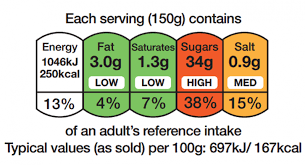 The traffic light system. This uses the colour code green, amber and red to communicate whether products have a low, medium or high level of salt, sugar and saturated fat based on daily intake references.
The traffic light system. This uses the colour code green, amber and red to communicate whether products have a low, medium or high level of salt, sugar and saturated fat based on daily intake references.
Warning labels. This uses a ‘high-in’ label to inform consumers that foods are high in certain nutrients
Front-of-Pack Nutrition Labelling Consultation in the Caribbean
Caribbean countries are starting to explore the introduction of front-of-pack nutrition labels. The CARICOM Regional Organisation for Standards and Quality held a consultation from 15th October 2018 to 31st January 2019 on pre-packaged food labelling which included front-of-pack food labelling. The labelling system being explored is warning labels and we were pleased to have been able to submit a response to their consultation.
Our Views
- We support the introduction of front-of-pack nutrition labels in the Caribbean
- We believe that front-of-pack nutrition labels present a quick, easy and useful way of communicating the healthiness of pre-packaged foods
- We believe that front-of-pack labelling provides information in a way that is easier to understand, with respect to healthiness, than back-of-pack nutrition labelling
- We believe more work is needed to determine which front-of pack labelling system would be most effective in the Caribbean
- We believe that a full assessment is required to determine if front-of-pack food labels will influence consumer behaviour in the Caribbean and if not, why not
- We feel that if the ‘high-in’ labels are to be used, the colour of the labels should be reconsidered, from black to red. This is important so that we begin to steer dialogue away from black always being seen as a negative, which has a wider societal context with regards to race and ethnicity
- We believe a standard international front-of-pack nutrition label is required to ensure consistency and to prevent confusion
Next Steps
CARICOM Regional Organisation for Standards and Quality will review all the comments it has received from throughout the region and decide on a way forward with respect to nutrition labelling of pre-packaged foods.
We look forward to seeing how the strategy for FOP labelling in the Caribbean develops and are pleased to see this action being taken on this matter.
References
- UNICEF, Situation Analysis of Children in the Federation of St Kitts and Nevis, UNICEF Office for the Eastern Caribbean Area and the Government of St Kitts and Nevis, Christ Church, Barbados, 2017
- PAHO, Health in the Americas, 2012: St Kitts and Nevis, PAHO, 2012
- Kanter, R., Vanderlee, L., & Vandevijvere, S. (2018). Front-of-package nutrition labelling policy: Global progress and future directions. Public Health Nutrition, 21(8), 1399-1408. doi:10.1017/S1368980018000010
Recording of Our Fibroids Diet and Hormones Webinar is Now Available
On 27th October 2018, we hosted the first webinar in our fibroids self-care webinar series, Fibroids, Diet and Hormones. If you missed this webinar, we’re happy to say that the recording is now available.
In this first webinar we were delighted to have guest speaker, Le’Nise Brothers who is a Registered Nutritional Therapist and the Founder of Eat Love Move. Le’Nise delivered a comprehensive, in-depth, informative presentation which you can download here. This 1-hour presentation includes:
- An introduction to fibroids including the types of fibroids, symptoms, risk factors and how fibroids are diagnosed as well as advice on getting the most out of your doctor’s appointment
- The causes of the continual growth of fibroids
- Balancing your hormones as an effective way of managing fibroids
- How you can take control and balance your hormones through diet and nutrition, lifestyle changes, physical support, stress management and emotional support
This is an excellent, empowering webinar that provides practical information that you can easily apply to your day-to-day routine to alleviate your symptoms and successfully manage fibroids.
How to Access the Recording
To purchase and download this webinar, please do the following:
- Visit the webinar product page here
- Click ‘Add to cart’
- Follow all the instructions
- Once you click ‘Place order’ you will have unlimited download access to the webinar.
- After you make payment ($15), you simply click the blue button under “Download” and you’ll be taken to DropBox where you can watch the recording directly or you can click ‘Download’ at the top right of the screen to save the file to your computer or your DropBox to watch later.
If you have any problems downloading the recording, please don’t hesitate to get in touch with us by email events@lakehealthandwellbeing.com
What Attendees Had to Say About this Session
“I enjoyed the webinar today. Learned a lot. Thank you Le’nise for sharing your wisdom, it was very informative.”
“Great Webinar. Thanks very much Le’Nise and Abi.”
“This was a great webinar!”
“I didn’t want it to end!”
Upcoming Webinar
You may also be interested in the next webinar in our series which is on fibroids treatment. We’re delighted to have Consultant Gynaecologist, Apryll Chase, discussing all the treatment options for fibroids, their pros and cons and how to make the sometimes difficult decision of selecting the best treatment for you. You can find out more about this webinar here
Further Information
If you’d like more information or have any questions, please don’t hesitate to send us an email, we’d love to hear from you.
Our Thoughts on Sweetness #9 By Stephan Eirik Clark
We’re always looking for good public health books to read and have been going through various public health reading lists. One book that kept coming up was Sweetness #9 by Stephan Eirik Clark so we decided to order this book from Amazon and get reading.
Sweetness #9 is a fictional book that focuses on the food industry and explores the impact of additives (in the book they focus on flavour enhancers and artificial colouring) and sweeteners, but the book also touches on issues around food regulation, the approval process and the nature of modern life that leads to the demand for processed, easy to prepare meals. This was an interesting read that opened us up to the possible reality of the inner workings of the food industry and the fact that we’re unlikely to be fully aware of, nor understand, what has been added to the processed foods we eat and the long-term effects of these additives.
Sweetness #9 takes its readers on a 39-year journey as we follow the life of the main character, David Leveraux, who starts his career, after graduating from a food science program with a MSc, as an eager Flavourist-in-Training at a leading global food company. His new job starts well, and he is assigned to the Animal Testing division where his role is to test the long-term toxicity of an artificial sweetener called Sweetness #9 (the testing is a legal requirement before FDA approval can be granted). Whilst conducting these studies on Sweetness #9 David notices some side effects in both rodents and monkeys. Feeling conflicted he isn’t sure what to do, but he eventually reports this to management, but this doesn’t go well, and he ends up being dismissed from the company. This leaves him feeling disillusioned and he wonders what to do with his knowledge of the effects of the sweetener: should he report them to the authorities or not? David keeps quiet and life moves on, but as the years go by Sweetness #9 is approved by the FDA and it is in everything from soft drinks to toothpaste. David continues to feel conflicted especially as he observes, over the next 30 years, society changing, including his own family, who consume a lot of Sweetness #9. The public is gaining weight, ADHD is identified and seems to be on the increase, and anxiety and generalised dissatisfaction is rampant – all these effects are the same effects he observed years before in the rodents and monkeys exposed to Sweetness #9.
Through the main character of David we explore how families’ eating habits have changed in the modern era, how food is manipulated and the politics behind food. We see food scientists question the intentions behind the decisions being made in their industry – why are we really making children’s medicine that tastes like bubble gum and candy apples? Here’s an interesting exchange from the book, although this is fiction you can imagine this type of conversation happening.
“I just don’t know if we should be doing this.”
“What?”
“Making it like candy.”
“Children’s medicine? So, this is political, is it?”
“What if kids start trading them on the playground?”
“This is why we have nurses. To dispense medicine. Or are you for sick children now? Hardly a platform I can support.”
“All right, all right. You’ll have a new formulation by the end of the day. But when I’m called before Congress to explain how America’s children came to be like fatted calves, standing there ready and compliant for the next Rasputin, it’s your name I’ll say while leaning into the microphone.”
This was a scenario where a young flavourist is convinced to make children’s anti-psychotic liquid medicine taste like wild cherry to appease a multi-national pharmaceutical company and thus ensure they keep said company as a client.
A story that ran through the book was one based around Hitler, we struggled at first to see the relevance of this story-line but it all come together nicely at the end, we won’t spoil it for you. I don’t know how true to life this story-line is, but we did find bits of it fascinating. In the book, flavourists were recruited during the war, as food was scarce, to create meals that would allow military leaders to have the sensation of having a gourmet meal. So, using meagre resources and their knowledge of chemistry they mimicked food textures and flavours so perfectly that leaders felt they were eating the real thing. Also, in the book, flavourists were recruited during the war for other reasons, to fight the enemy in a subtle way. So, the book really gave a wide-ranging look at the role of flavourists in society.
This was an interesting read and forces readers to reflect on the food we eat and how additives and sweeteners could be affecting the health and wellbeing of our society.
Want to read this book too? You can purchase a copy on Amazon, see options below.
Disclosure: this post contains affiliate links. Find out more here
Sweet and Sour Broccoli
In today’s blog post Abi shares her sweet and sour broccoli recipe – yum!
We recently changed our diet and started cutting down on the amount of meat we consume. We had already pretty much cut out red meat (we only eat this rarely) and now we eat chicken or fish once or twice a week, the rest of the week we are vegetarian, but our diet is flexible and we’re not perfect, we do indulge every now and again, our overall aim is to achieve a balanced, healthy diet.
I am constantly looking for creative vegetarian recipes. After reading online that many vegetarians replace chicken with cauliflower and broccoli to make dishes like cauliflower buffalo wings (huh!), I decided to get a bit creative and try sweet and sour broccoli.
We love sweet and sour chicken and I have been making a very simple version of this at home for years, so I simply used this tried and tested recipe but replaced the chicken with broccoli, and oh boy, it was a hit! We absolutely loved it, so much so that I had to make it again to make sure it wasn’t a fluke and it was just as good the second time around. It was delicious and honestly (it may be hard to believe) it tastes just like the chicken version.
I loved this dish so much that I decided to share the recipe. If you’re looking for an easy and delicious way to introduce more vegetables into your diet, then I highly recommend you try this recipe. If you do try it, please let me know what you think.
Happy cooking! (and eating!)







